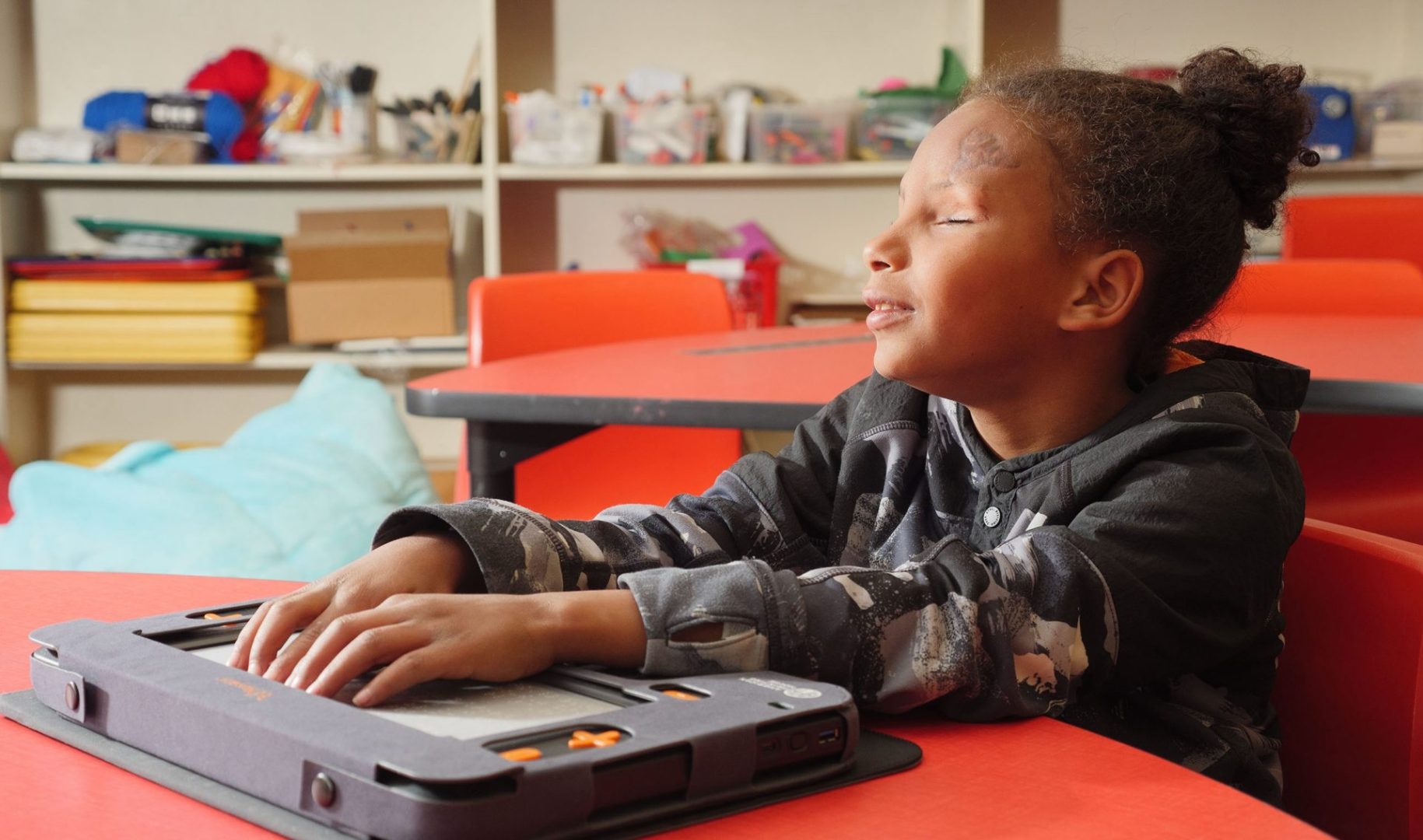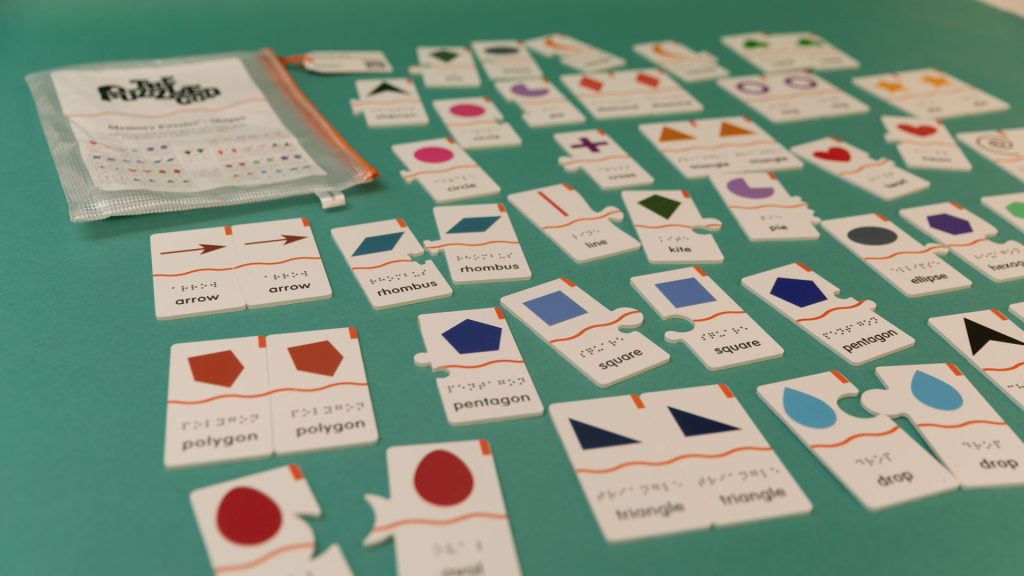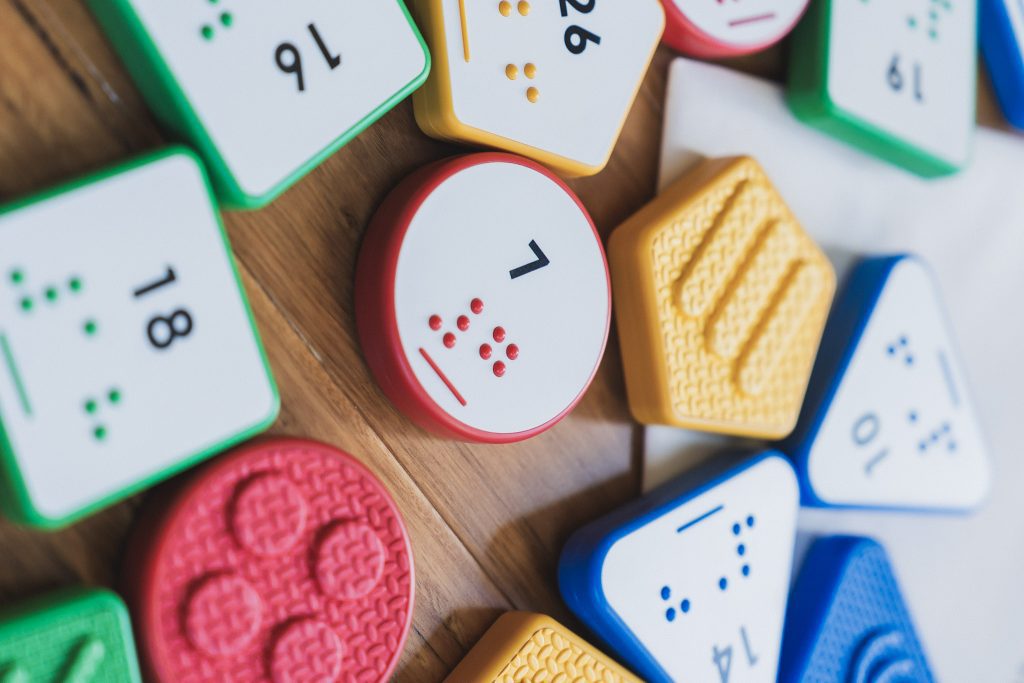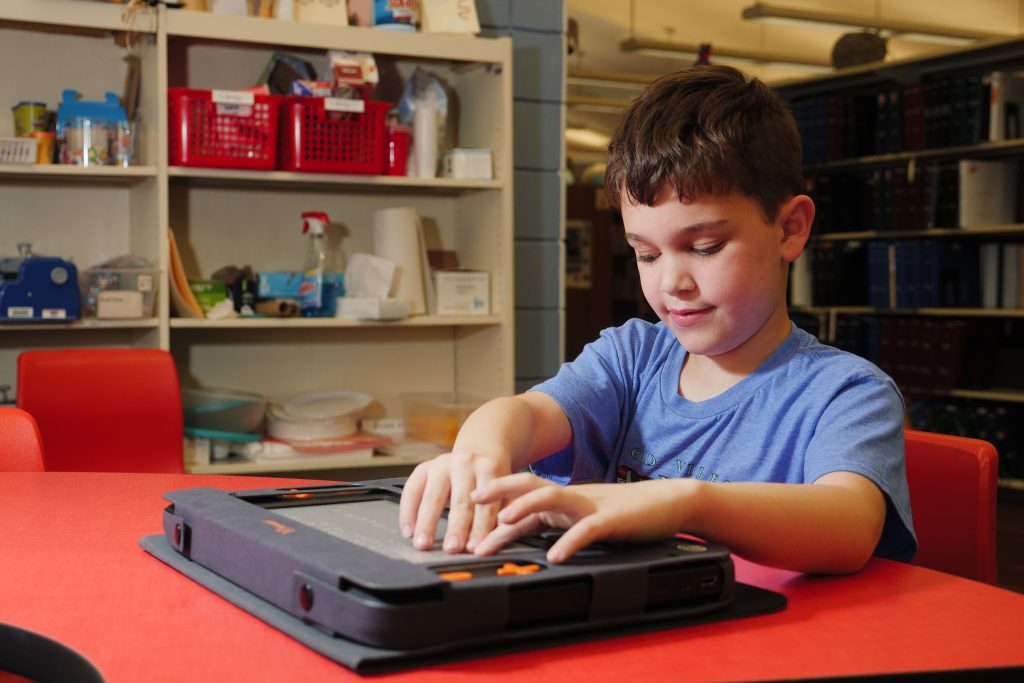Building a Better Future for Elementary School Students with the Monarch

Technology is constantly changing, opening a whole new world of possibilities that were unimaginable even ten years ago. Rendering braille and tactile graphics on the same surface, APH’s Monarch fits into that category. The Monarch’s multiline braille display is breaking down barriers for elementary-age students as they receive a better understanding of fundamental concepts.
Leslie Edmonds, TVI and low vision trainer at the Northwest Center for Assistive Technology Training (CATT), and Eli Sanchez, technology support trainer for nonvisual tech at CATT, conduct technology trainings for TVIs, community members, and parents across the Northwest region. Covering Washington, Oregon, Idaho, Montana, Wyoming, Alaska, Hawaii, Guam, Northern Mariana Islands, and American Samoa, they offer virtual, in-person, group, or one-on-one training sessions and present at conferences on occasion. They teach individuals to use technology so participants can help others in their community learn as well. Recently, they have been showing students how to use the Monarch.
Leslie created a new game for tactile graphics awareness on the Monarch called Same Different. Students are given an embossed tactile graphic, and the same graphic is loaded onto the Monarch in front of them. While the images look similar at first, they discover how the Monarch can zoom in and display the graphics in more detail. One graphic commonly used for this exercise is the Eiffel Tower, as students can view its outline while zooming out and then zoom in to see each detail of the structure.
The Same Different game can also be helpful for comparing three dimensional shapes to two dimensional ones. Students holding a physical cone compare it to a picture on the Monarch, zooming in to see different parts of the same cone. “The kids are learning about shapes at a young age. We don’t want their shapes to only be two dimensional, and we don’t want them to only be a single line. We want them to have depth of understanding,” said Leslie.
Leslie and Eli also suggest playing Jeopardy on the Monarch as a learning activity. Teachers can ask students to name math symbols or solve multi-line equations they input in the Word processor. They can also pull up tactile graphs in the tactile viewer app and ask students to identify different types of graphs, like line and bar graphs. Meanwhile, younger students can name that shape or animal. Opening a tactile map of the U.S. or 13 colonies, teachers can have students name the colony or state by pointing to them. Then, they can zoom in and find the braille label so the student can check to see if they are correct. To make those questions easier, teachers can load an image of the shape of each state and ask for its name. Once students have their answers, they can write them in a file on the Word processor. Playing this game helps students hone skills, such as writing and maneuvering around graphs on the Monarch, in a fun way. “If you get the buy-in of a game and they learn the skills, then when they get to the serious part, like taking a test, they’ll have more confidence,” Leslie said.
The Monarch is the future, and Leslie and Eli want to prepare for it by having their students participate in these lessons. “The Littles don’t know about a time when the Monarch didn’t exist, so they’re just cruising like this is normal. They’re living in a different world than our older students.” Meanwhile, the Monarch and its many robust features encourage those students to explore the device. “It brings this natural curiosity, which leads to independence, and I think that’s probably the most important aspect. As a teacher, it’s that it’s enough to interest them to go further,” said Leslie.
The Monarch will be publicly available in September and eligible for purchase with Federal Quota funds. Stay tuned to the website, APH News, and your email inbox for more information on this upcoming device.
Share this article.
Related articles

Meet Your Match with Memory Puzzles: Shapes
Are you a new braille reader, interested in learning about shapes, or a puzzle fan looking to put your skills...

Reach & Match Number Tiles Enhances User Experience
The APH Reach & Match Number Tiles are a product addition to enhance user experience with our Reach & Match...

Developing Reading and Spelling Skills on the Monarch
Literacy is one of the cornerstones of education. APH’s Monarch is overcoming obstacles to enhance reading and spelling skills for...
